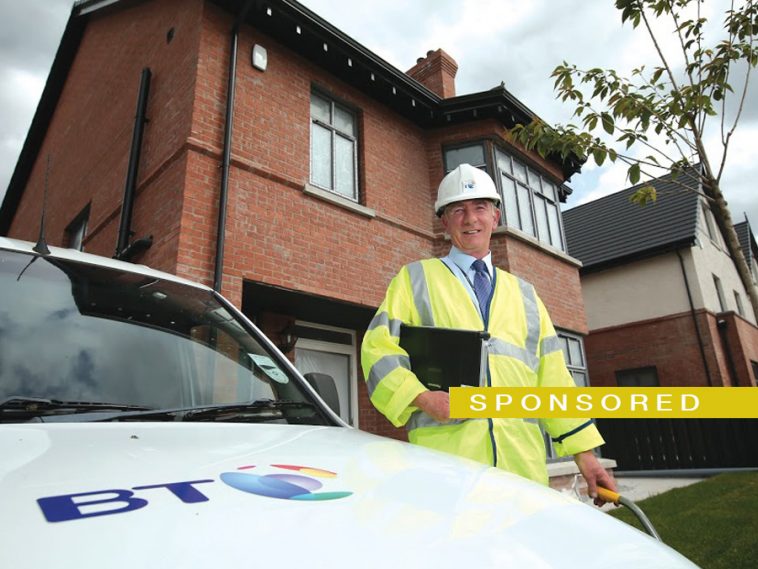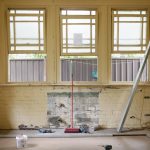At BT, we understand that taking on a self-build project
can be both an exciting and overwhelming time, with
many installation decisions to consider. Fibre broadband
is now widely regarded as essential as other utilities, such
as water, electricity and gas, so it is important to get your
new home ready for it, writes Garrett Kavanagh.
In late 2017, BT announced a £20 million investment in a major expansion of Ultrafast Broadband to towns across Northern Ireland. This investment will see a further 140,000 premises gain access to Ultrafast Broadband after the deployment of ‘Fibre-to-thePremises’ technology, which is capable of providing Ultrafast Broadband speeds of up to 1Gbps – fast enough to download a twohour HD movie in 25 seconds or a 45-minute HD TV programme in just five seconds.
Through our current investment programmes, 25 per cent of homes and businesses in Northern Ireland are scheduled to have access to Ultrafast Broadband by March 2019. So, even if fibre broadband is not yet available in your area, by ensuring your home is prepared for an upcoming fibre installation, you will save potential disruption in the future.
Our Newsites team at BT in Northern Ireland is here to guide you as you take on your self-build project. Installing fibre technology into your new home now will ensure that, once fibre broadband is made available in your area, you can easily take advantage of it. Many different communication providers use our fibre network to supply Superfast Fibre Broadband and Ultrafast Broadband and you can find a full list of the service providers at www.nibroadband.com.
Consumers who install fibre broadband into their homes enjoy numerous benefits, including streaming 4K films and music, catching up on TV on demand, making HD video calls, playing online games, uploading photos and video clips to social network sites, phone calls or working from home – without speed or connection disruptions.
To install fibre broadband technology, there are two main factors to consider at the early stages of your project:
Getting the fibre cable into your home
During your build, you should ensure that a fibre cable is installed. Typically, your builder will install a copper cable from your home to the curtilage of your site – but ensuring that a fibre cable is also installed will future-proof your home. At BT, we recommend that you contact us to register your site at least six weeks before you are ready to do the ground works to install your services. Once you have registered your site, a BT Surveyor will meet you to give advice on your options and agree the best solution for your home. BT will provide the materials and typically your builder will do the installation work.
Getting the best from fibre broadband in your home
It is important to think about how you will use broadband in your home. What is the best location for the hardware associated with fibre, such as the modem, router, and the power pack? While home Wi-Fi is a popular choice for domestic broadband usage, will this be enough for future technology? Wi-Fi can also have limitations on speed and, depending on the layout of your home and thickness of your walls, you may have blackspots. You should ask yourself: how will you use broadband in the future?
Will you be converting your spare bedroom into an office, or are you planning to start your own business and use your garage as a business premise? How your house is wired internally and the positioning of data points and power sockets are important factors to consider now to make life easier for future broadband consumption.
How to register your site
To register your site please visit www.openreach.co.uk/ournetwork and click ‘Registering your site.’ This website will also give you other useful information on additional services, such as help locating and altering our existing network.
BT in Northern Ireland Newsites Team – Contact us:
Email: newsite.btni.team@bt.com
Phone: 0800 085 7546









